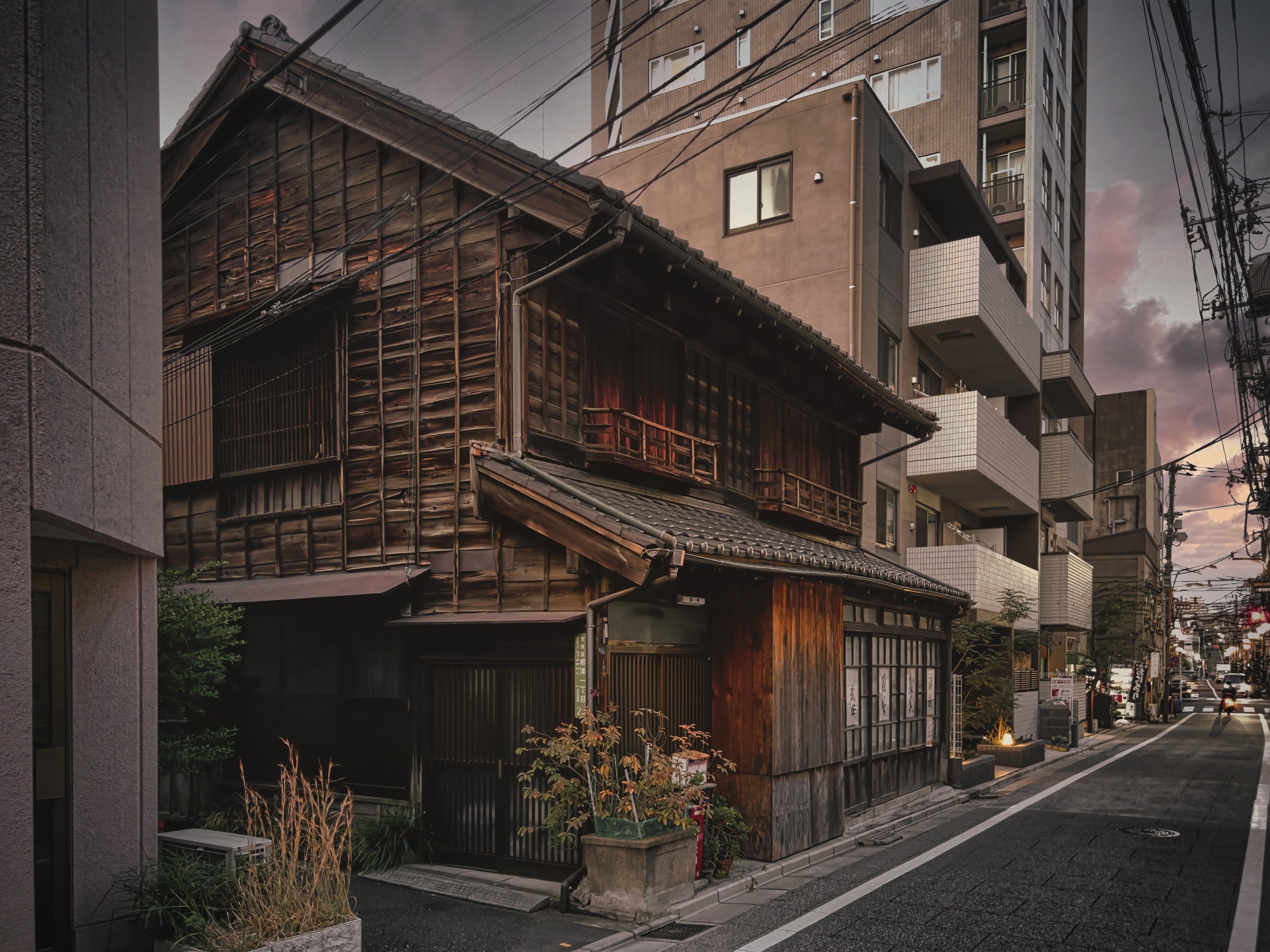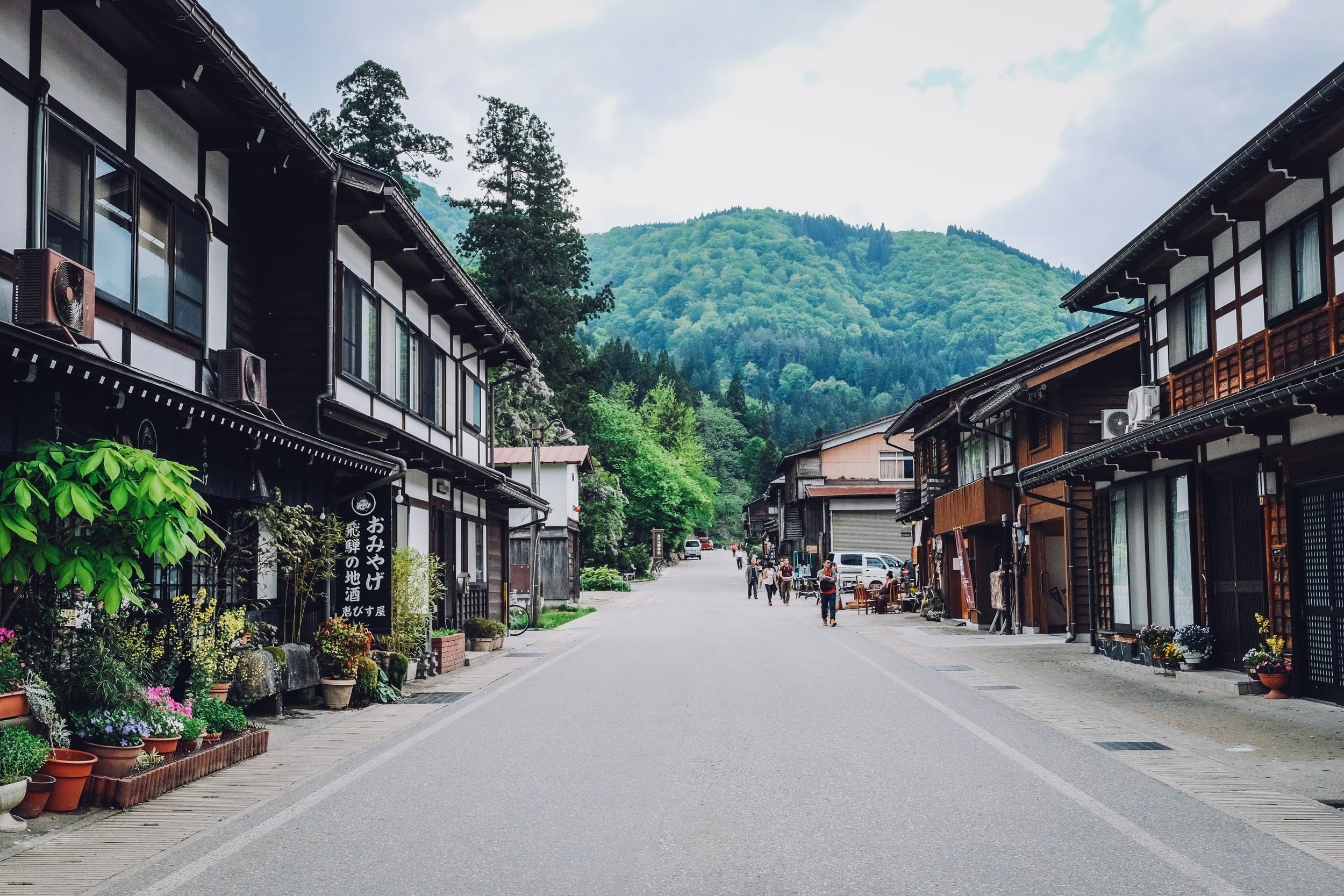
Japan is suffering an
“empty house problem”.
Our mission is to slow the ongoing disappearance of traditional Japanese architectural heritage and to help turn abandoned houses into homes.
Who we are.
Kominka Japan is non-profit organization (application-pending) whose aim is to raise awareness and appreciation for traditional Japanese architecture throughout Japan and around the world.
Our goal is to provide access to resources and the sharing of essential information, to connect people to encourage mutual education and understanding, and to enable passionate individuals to acquire, renovate, maintain, and preserve traditional Japanese buildings.

Kominka Japan is founded with a deep respect for the traditions and craftsmanship that minka uniquely encapsulate, as well as the local communities where these beautiful buildings are located.
The popularity of the Facebook group Kominka Japan – a Resource for Traditional Japanese Residences made it apparent that there was a sizeable and genuinely committed global fanbase for the distinctive style of Japan’s traditional architecture.
United by our passion for minka preservation, the founding members of Kominka Japan decided to put our drive, ideas, and enthusiasm toward creating a useful association to help achieve our goal of preserving kominka, machiya, and other examples of classic Japanese architecture.
Join the conversation: Kominka Japan Facebook group
Meet the Kominka Japan team
-
![Photo of Stuart Galbraith IV]()
Stuart Galbraith IV
Stuart Galbraith IV is a writer and cinema historian, the author of seven books including The Emperor and the Wolf, a joint biography of Akira Kurosawa and Toshiro Mifune, hailed by Martin Scorsese as “a must-read.”
He produces short documentaries, audio commentaries, and essays for DVD and Blu-ray releases of classic Japanese and other movies, and moved to Japan in 2003 following archive work at Warner Bros. and MGM. He lives in an 1810 minka in the mountains north of Kyoto with his wife, Yukiyo, and daughter, Sadie.
-
![Wendy Bigler gives the thumbs up to kominka!]()
Wendy Bigler
Wendy Bigler has spent much of the past few decades admiring, and sometimes restoring, old houses in her native US and now Japan. Her husband is a lifelong farmer from Mexico, and together they are renovating a simple hundred year-old farmhouse in Nagano and raising Mexican vegetables using environmentally-conscious methods.
She spins wool into yarn and weaves, and aspires to one day tend a small flock of sheep. With an undergraduate degree in Biology and Masters and PhD. in Geography (indigenous environmental history) she has twenty years experience in secondary and higher education, and now focuses on international college counseling and essay coaching.
-
![]()
Vince Ng
Vince Ng has been in the hospitality and tourism business since 2014, renovating machiya and running guesthouses/hostels/hotels in Kyoto and Osaka. He has recently moved to a minka in the Kyoto countryside and is starting an organic farm and inaka experience program for those looking to learn about rural living or wanting a retreat from urban life.
He is an active member of the Mikoshi community and loves attending and participating in matsuri. On his days off you will find him camping around Japan in his RV, connecting with remote villages to learn about their local culture.
-
![]()
Lauren Scharf
Lauren Scharf lives in a 1907 kominka north of Hakui on the Noto Peninsula with her Scottish husband and four mostly useless cats. She and her husband entirely self-renovated, furnishing the place with an assortment of antiques, recycle shop treasures, hand-built items, and a few new pieces. Since the pandemic began, she has also focused her energy on organic gardening with the goal of being as self-sustainable as possible in a few years.
When not plastering walls or refinishing cabinets, she's the co-owner of Okuni: Japan Unbound, a travel company that emphasizes lesser-known parts of Japan and deep dives into Japanese culture and history.
-
![Michael Juerges]()
Michael Juerges
Michael is a PhD candidate with the East Asia Sustainable Development Programme at Kyoto University. His research and academic activities are centered in sustainable rural development and rural livelihoods, with a focus on agri-touristic entrepreneurs, rural networks and structural problems resulting from demographic development trends in rural areas.
One of these structural problems is Japan’s “empty house problem” (akiya mondai), which is characterized by the abandonment and demolition of traditional architecture. His involvement with Kominka Japan is motivated by this ongoing disappearance of sites of Japanese architectural heritage. -
![Photo of Louise Shimamoto with a poster of David Sylvian from Japan behind her]()
Louise Shimamoto
Louise is a digital product designer based in London, UK, where she lives with her Sapporo-born husband Hiro. Living on the other side of planet renders the prospect of renovating their very own kominka impossible, and so Louise supports the fight to preserve Japan’s architectural heritage by making websites about such matters.
Connect with Louise via LinkedIn








